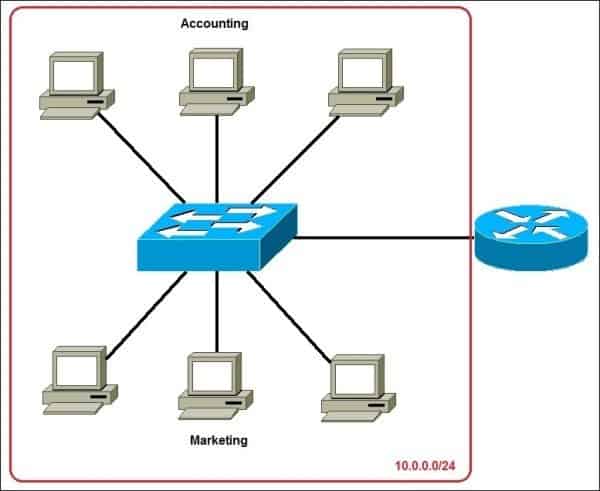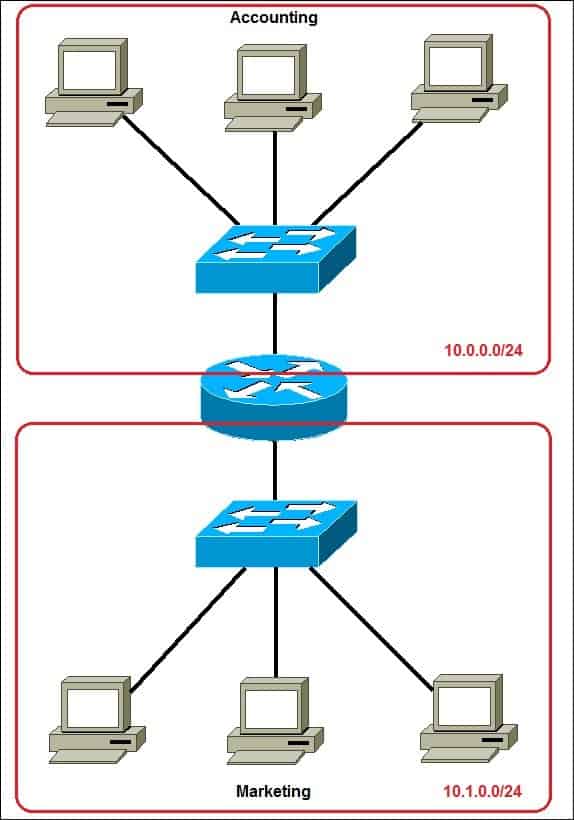Subnetting is the practice of dividing a network into two or more smaller networks. It increases routing efficiency, enhances the security of the network, and reduces the size of the broadcast domain.
Consider the following example:
In the picture above we have one huge network: 10.0.0.0/24. All hosts on the network are in the same subnet, which has the following disadvantages:
- a single broadcast domain – all hosts are in the same broadcast domain. A broadcast sent by any device on the network will be processed by all hosts, creating lots of unnecessary traffic.
- network security – each device can reach any other device on the network, which can present security problems. For example, a server containing sensitive information shouldn’t be in the same network as the user’s workstations.
- organizational problems – in large networks, different departments are usually grouped into different subnets. For example, you can group all devices from the Accounting department in the same subnet and then give access to sensitive financial data only to hosts from that subnet.
The network above could be subnetted like this:
Now, two subnets were created for different departments: 10.0.0.0/24 for Accounting and 10.1.0.0/24 for Marketing. Devices in each subnet are now in a different broadcast domain. This will reduce the amount of traffic flowing on the network and allow us to implement packet filtering on the router.
Download our Free CCNA Study Guide PDF for complete notes on all the CCNA 200-301 exam topics in one book.
We recommend the Cisco CCNA Gold Bootcamp as your main CCNA training course. It’s the highest rated Cisco course online with an average rating of 4.8 from over 30,000 public reviews and is the gold standard in CCNA training:


